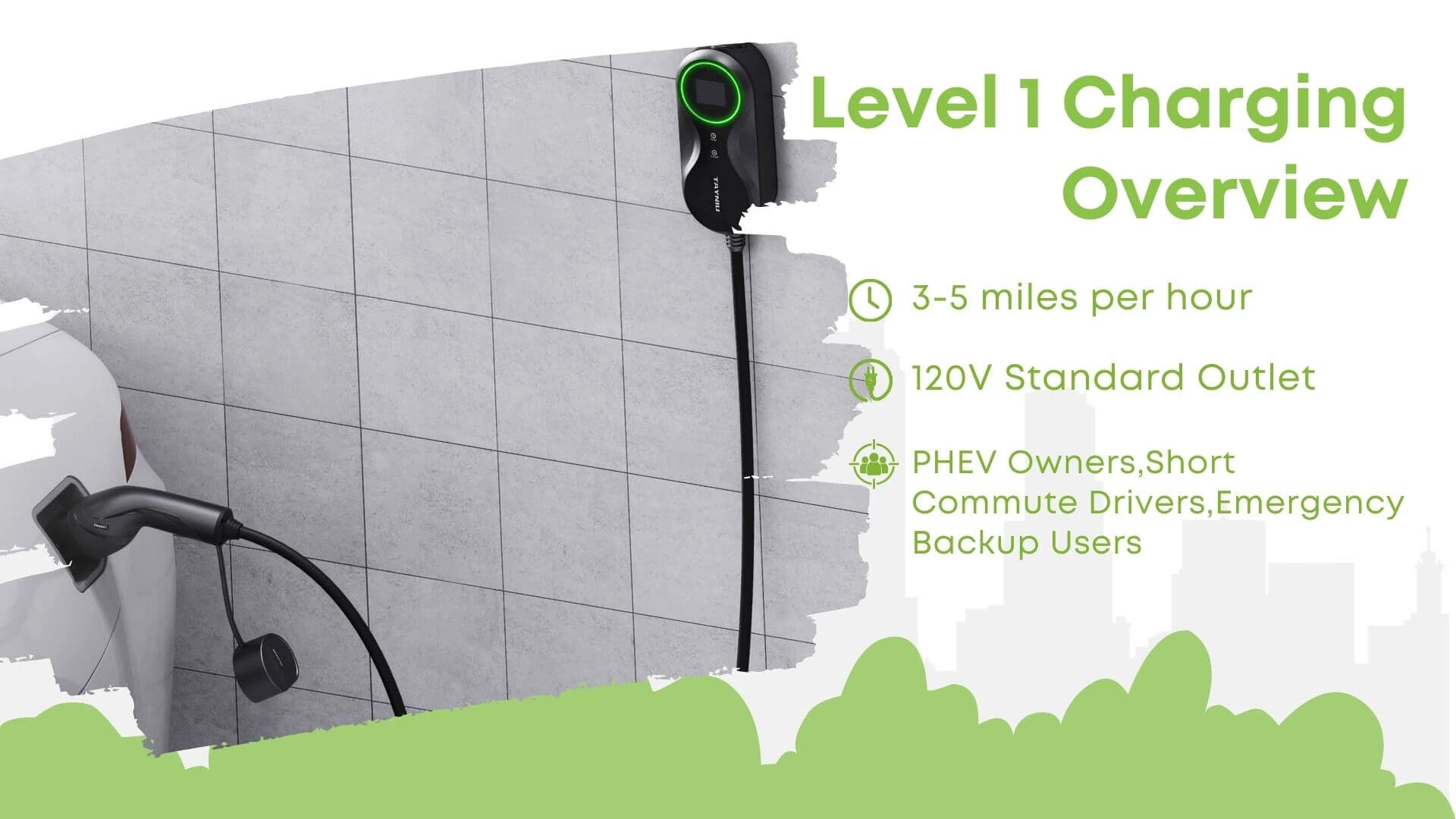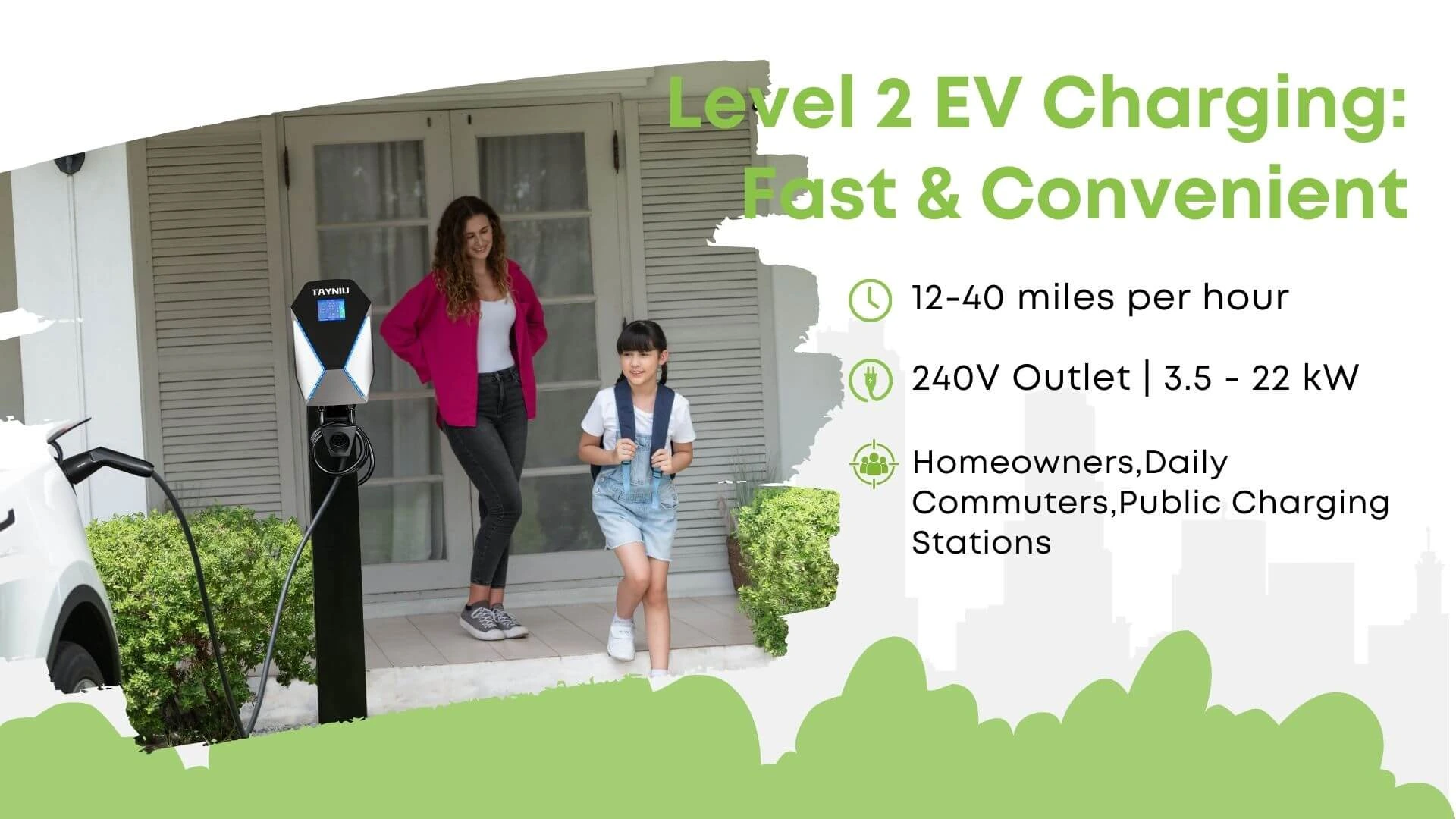Electric Vehicle Chargers: The Ultimate Technical Guide
As electric vehicles (EVs) continue to gain popularity worldwide, understanding different types of electric vehicle chargers and their charging speeds is crucial for both current and prospective EV owners. This guide explores EV charging technologies to help you choose the best charging solution for your vehicle.
Types of Electric Vehicle Chargers
Understanding the different types of EV chargers is essential for selecting the best option for your charging needs. The right charger can optimize convenience, efficiency, and cost-effectiveness, whether for home or commercial use.
Electric vehicle chargers are classified into three levels: Level 1, Level 2, and Level 3 (also known as DC fast charging). Each level offers different charging speeds and is suited for specific use cases.
Level 1 Charging: Basic Home Charging
- Charging Speed: Adds about 3 to 5 miles of range per hour.
- Power Output: 120 volts (standard household outlet).
- Installation Requirements: No special installation required, can use an existing wall outlet.
- Cost Analysis: Low-cost charging solution, but slow speed may require alternative solutions for daily users.
Best For:
- Plug-in hybrid vehicles (PHEVs).
- Drivers with short daily commutes.
- Occasional or emergency charging.
Pros:
- No additional installation required.
- Low-cost charging option.
Cons:
- Slow charging speed.
- Not practical for fully electric vehicles.
- Unsuitable for long-distance travel.
Level 2 Charging: Efficient Daily Charging
- Charging Speed: Adds about 12 to 40 miles of range per hour, depending on vehicle model.
- Power Output: 240 volts (16 to 80 amps).
- Installation Requirements: Requires a dedicated 240V outlet; may need professional installation.
- Cost Analysis: Moderate cost, typically $500-$2,000 for charger and installation.
Recommended Models:
- Portable Chargers: Infinity Series, SmoothPro Series.
- Home Chargers: SpeedPro Series.
Key Advantages:
- Significantly faster than Level 1 chargers.
- Suitable for both home and public charging.
- Compatible with most EVs.
Level 3 Charging (DC Fast Charging): Rapid Charging Solution

- Charging Speed: Adds about 100 to 400 miles of range per hour.
- Power Output: 400 to 900 volts DC.
- Installation Requirements: Requires specialized infrastructure, typically found at public charging stations.
- Cost Analysis: Higher installation and equipment costs, primarily used for commercial or fleet applications.
Recommended Models: TN200, TN300, TN680, TN918 Series.
Unique Features:
- Direct DC charging for maximum efficiency.
- Can charge from 10% to 80% in 20-40 minutes.
- Ideal for long-distance travel.
- Commonly found along highways and commercial areas.
Factors Affecting EV Charging Speeds
To optimize your EV’s performance, it’s important to understand the factors that influence charging speed:
- Onboard Charger Capacity
- Each vehicle has a maximum charging rate.
- Example: If your car’s max charging power is 7 kW, it will not charge faster even with a 22 kW charger.
- Battery Charge Level
- Charging is fastest when the battery is below 80%.
- Nearing 100%, charging slows down to protect battery life.
- Temperature Conditions
- Extreme temperatures (hot or cold) can reduce charging efficiency.
- Battery management systems regulate charging speed to prevent overheating or freezing.
- Grid Capacity and Power Supply
- The availability and stability of the electrical grid can impact charging speed.
- High-demand periods may result in slower charging rates.
- Charger Network Availability
-
- The type and number of public charging stations in an area can affect convenience and access.
- Some fast chargers may experience congestion, leading to wait times or lower charging speeds.
Real-World Charging Scenarios
The following examples are for illustrative purposes only and are not based on actual users. They aim to demonstrate how different EV chargers can be utilized in everyday situations.
Home Charging Example
John, a Tesla Model 3 owner, installed a Level 2 home charger. He charges his car overnight and wakes up to a full battery every morning, eliminating range anxiety and ensuring he’s always ready for his commute.
Public Charging Example
Emily, a Nissan Leaf driver, frequently uses DC fast chargers at shopping malls. While running errands, she can charge her vehicle from 20% to 80% in about 35 minutes, making long-distance travel more convenient.
Frequently Asked Questions (FAQ)
Q1: Which charger is best for home use?
A: For most EV owners, a Level 2 home charger is ideal as it offers a good balance between cost and charging speed.
Q2: Does fast charging damage my battery?
A: Frequent use of DC fast chargers may contribute to battery degradation over time, but modern EVs have battery management systems to minimize long-term damage.
Q3: Can I install a Level 2 charger myself?
A: While some portable Level 2 chargers can be plugged into existing 240V outlets, most home charging stations require professional installation for safety and compliance.
Q4: Are electric vehicle chargers universal?
A: Not all chargers are universal. While Level 1 and Level 2 chargers use common standards (J1772 in North America, Type 2 in Europe), DC fast chargers vary between CCS, CHAdeMO, and Tesla Superchargers.
Emerging Charging Technologies
Solid-State Battery Charging
- Faster charging times.
- Higher energy density.
- Enhanced safety compared to lithium-ion batteries.
Wireless Charging Innovation
- Dynamic charging technology allows vehicles to charge while in motion.
- Simplifies charging infrastructure for residential and urban settings.
By understanding the various EV charging options available, you can make an informed decision that best suits your lifestyle and driving habits.
Last Updated on February 25, 2025 by tayniu


